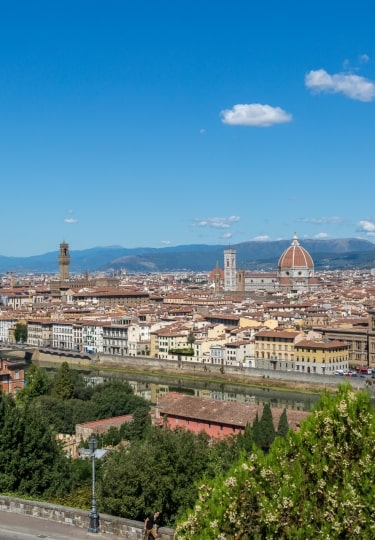The best time to visit Tuscany, which is beautiful at any time of year, is April to June and September to October, outside the hot summer months. Having said this, towns like Florence, Lucca, and Pisa are nonetheless extremely popular at the height of summer.
Tuscany, which lies on the west coast of central Italy, has a mild climate, with hot, dry summers and cooler winters, when some rain falls. Cities tend to be hotter than the coast, which is cooled by sea breezes. Snow may fall on higher ground in the middle of winter.
The best time to visit Tuscany is really a question of what you want from your visit; photographing the Leaning Tower of Pisa against a brilliant blue summer sky, perhaps, or visiting the Accademia in Florence to admire Michelangelo’s David when there are fewer crowds.
Or coming in fall, when the trees are beginning to assume their showy colors, the wine harvest is in full flow, and fresh truffles are appearing on market stands and restaurant menus.
Visiting Tuscany by Season
Summer
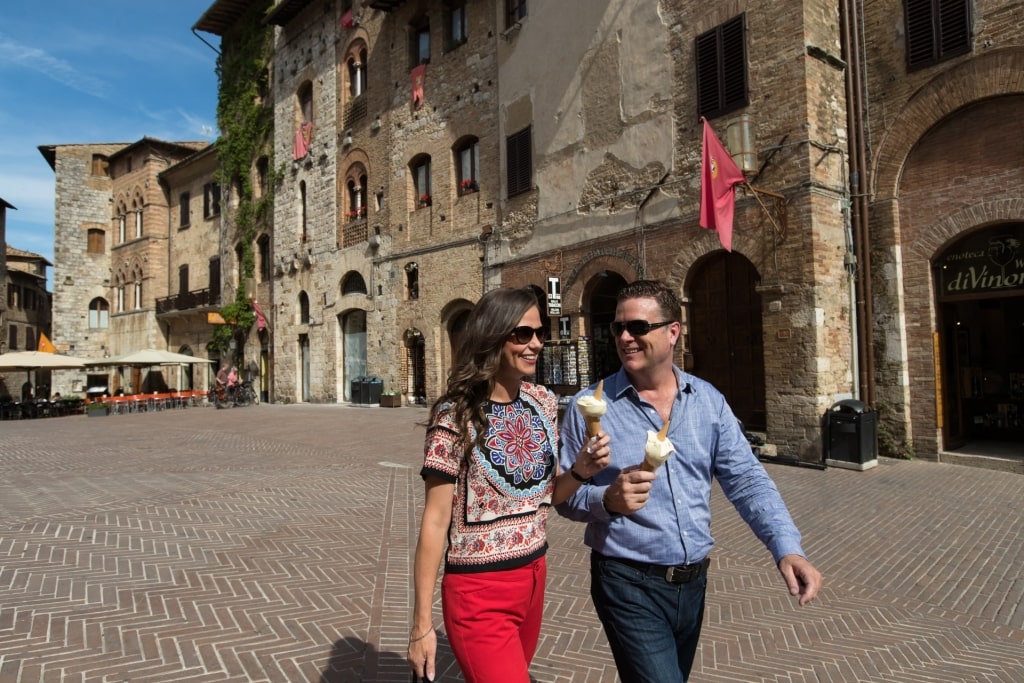
Florence
From June to August, Tuscany’s busy season is in full swing. Outdoor cafés will be doing a roaring trade, and the sight of a gelateria, with its rainbow-colored flavors of ice cream, will be a welcome one.
June is the month with the most sunshine hours, while August is the hottest, with an average daily high of 77°F (25°C). The temperature can peak at an intense 104°F (40°C), though, so pace yourself when sightseeing. Rain is rare, apart from the odd thunderstorm.
Fall
By September, the Italian summer highs are lessening, with temperatures ranging between 59°F (15°C) and 80.6°F (27°C). There’s an increased chance of rain, with an average of three inches (76mm) falling in September, rising to four inches (102mm) in November, the rainiest month.
Average daily highs in September are 69.8°F (21°C), with balmy nights, dropping to 62.6°F (17°C) by October. Come in the fall for fewer crowds, tempting market stalls, and the wine harvest.
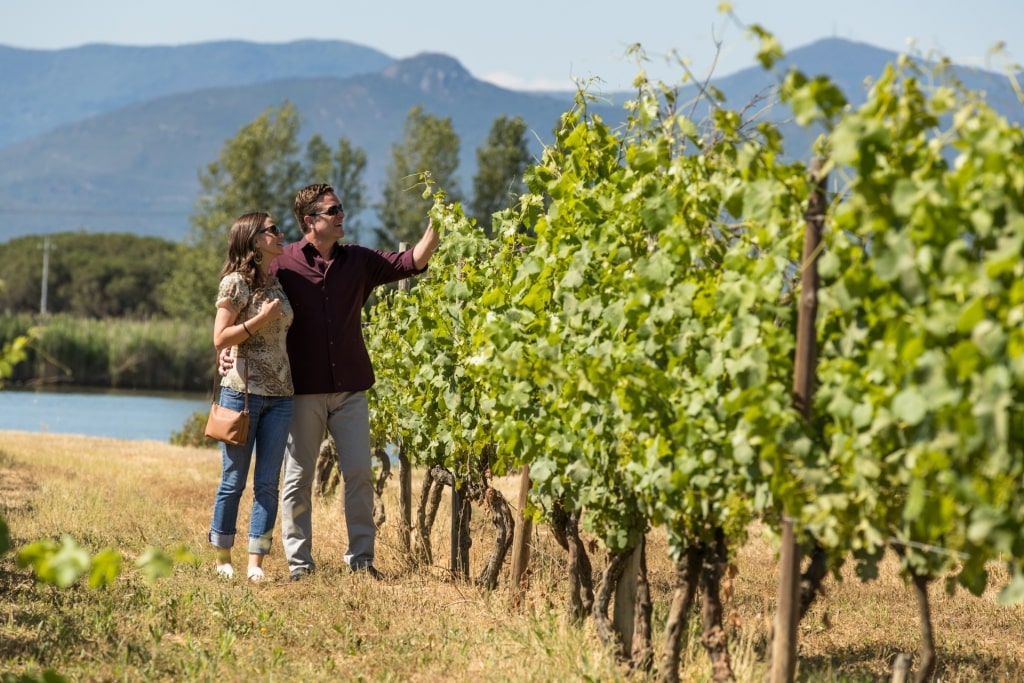
Vineyard in Tuscany
Winter
Winters in Tuscany are cool, with average daily highs of 44.6°F (7°C) in December and January, rising to 48.2°F (9°C) in February. December and January have 13 and 11 rainy days, respectively. Precipitation may fall as light snow on higher ground, but snow is rare in the cities or on the coast.
Spring
The best time to go to Tuscany is arguably March and May, with pleasant average daily highs of 64°F (18°C) by May.
April can bring spring showers, with 13 days on which rain might fall as opposed to nine in March and May—but you can always take refuge in a museum, or enjoy a blissfully long lunch with a few glasses of Tuscan red.
When Is Rainy Season?
Tuscany receives more rain in the winter months, with November peaking at an average of 102mm and 14 days with some rain. Otherwise, April can bring spring showers. But Tuscany doesn’t really have a protracted wet season; even the winter months of November, December, and January still have an average of five hours each of sunshine.
When Is High Season?
Peak season for tourism in Tuscany is June to September, when cities such as Florence, Pisa, and Lucca will be at their busiest. In August, many businesses in Italy (other than those associated with tourism) shut down as locals decamp to the coast.
If you’re visiting during these months and want to see the places that Italy is known for, like the Accademia and the Duomo in Florence, or the Leaning Tower and Field of Miracles in Pisa, it’s a very good idea to book entrance tickets in advance.
Remember, too, that Pisa is very near the coast, so it’s perfectly feasible to spend the morning admiring the antiquities and then head to the Tuscan beach in Viareggio for the afternoon.
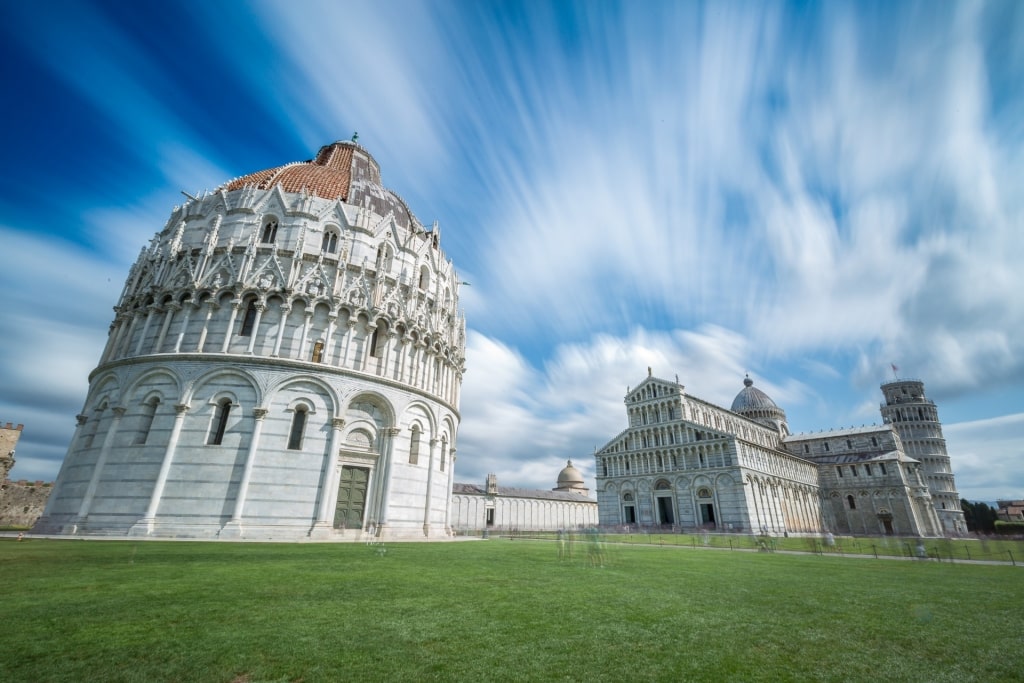
Field of Miracles, Pisa
When Is Shoulder Season?
The shoulder months of April to June and September to November are increasingly merging into the peak season as the edges of conventional travel seasons blur.
The weather will certainly be cooler in these months, and possibly wetter. However, getting around is more comfortable when it’s not so hot—and Tuscany’s cities are without exception glorious to explore on foot or by bicycle.
If you travel in May or September, you’ll still need to pre-book entrance to the most popular attractions.
When Is Low Season?
December to February is the lowest season in Tuscany. Higher rainfall means you’ll need an umbrella and warmer clothing to go out exploring.
Winter is a time when you could most likely walk straight into some of the most legendary galleries without pre-booking.
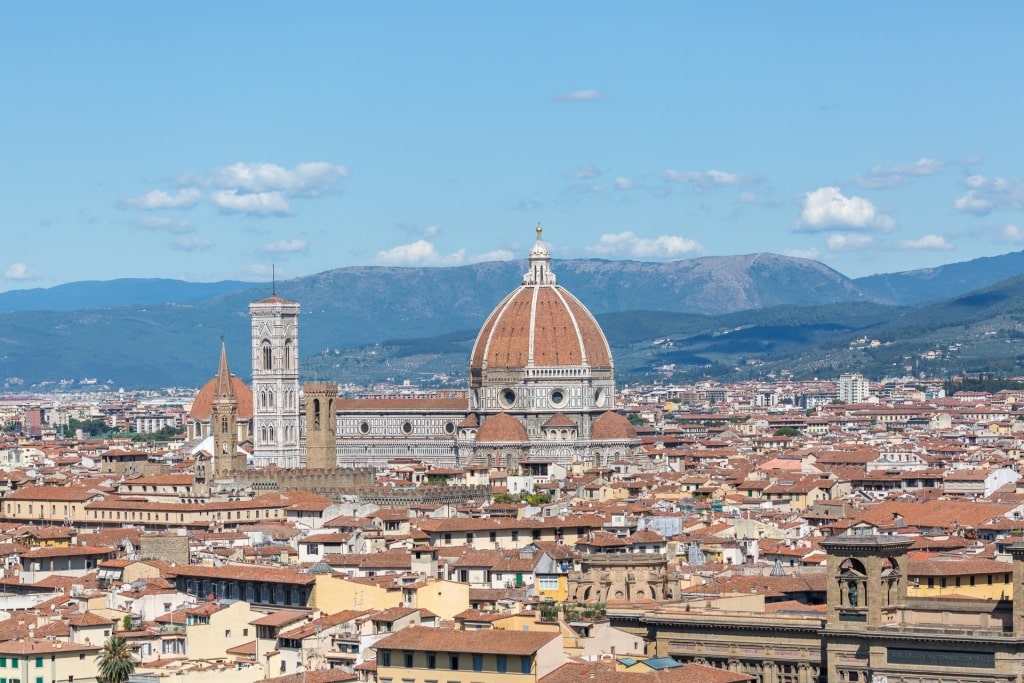
Florence
Do you want to discover more about Tuscany’s gorgeous landscapes and rich history? Browse Celebrity’s Tuscany cruises and plan your next voyage.
